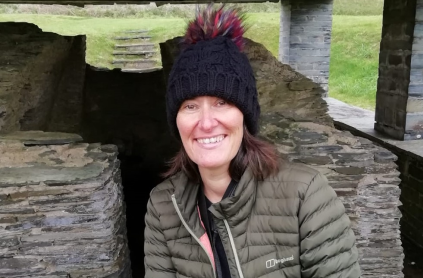When we talk about outdoor therapy, we often talk about working in nature. Yet when we talk about nature in this way, it can create separation in our minds, as though nature is something we’re separate from. Realistically, we’ve evolved alongside all the other species of life we see around us; we are part of nature, not separate from it.
There are various different phrases to describe outdoor therapy. Whilst the phrase ‘the more-than-human world’ isn’t exactly snappy, I’ve chosen to use it for two reasons. Firstly, I like that it can remind us of something very important; we humans tend to assume that we are the centre of the world. Indeed, as a society, we tend to exist from a flawed and dangerous assumption - that we are superior and can extract endlessly from life around us. When we refer to nature as something distinct from us, this furthers our sense of separation. When we think of a world that’s about more than just human beings, our focus shifts and our perspectives are more encompassing.
Working with the more-than-human world can quickly provide rich material, which is not so readily available indoors, and this is my second reason for choosing the phrase. The clunkiness of the phrase itself reflects the many nuances and layers involved in outdoor work, along with the discomfort that can arise being in the elements. Working in the more-than-human-world can be very different to working indoors. To begin with, there’s more stimulation for our senses. There’s movement and sound all around us – the crunch of leaves underfoot, the swaying of grass on the breeze and the chirruping of birds. Our senses are stimulated, which can evoke memories and feelings at different levels of consciousness; we might hear something in the soundscape which evokes a memory from childhood. This is then available to work with.
Such a rich environment gifts us many creative ways to work, from the literal to the metaphorical. For example, your therapist might notice how you move in relation to other people you encounter and comment on this. At the metaphorical level, you might explore the meaning of something you’re drawn to. Movement practices, noticing how your energy changes in different locations, stillness and tuning into the sensations in your body are all great ways of opening up exploration. These ways of working can enable much richer material to emerge, in a relatively short timeframe. Indeed, working with the more-than-human world can be like having turbo-charged therapy – so much so, it can be akin to having two therapists alongside you! This is because you’re not just working in a relationship with your therapist, you’re also working in and with the relationship you have with the more-than-human world. Such powerful ways of working not only bring us great benefit, they can also benefit other species of life, enabling us to strengthen our connection with the rest of life around us.
Read more...

Taking steps towards self-care
Lorna Grounsell shares her experience on how walking became part of her self-care routine. BACP member blogs

Thinking about therapy?
If you're not sure whether therapy could help, what type of therapy you need, or how to find a safe and effective therapist, we'll help you find the information you need.

Blogs and vlogs 2024
News and views from members, staff and clients
